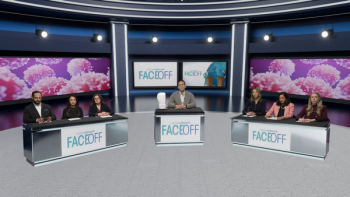
Linvoseltamab Achieves Deep and Durable Responses in R/R Multiple Myeloma
Surbhi Sidana, MD, discussed LINKER-MM1 trial efficacy findings, in which linvoseltamab was evaluated in patients with relapsed/refractory multiple myeloma.
CancerNetwork® spoke with Surbhi Sidana, MD, associate professor and hematologist of the Department of Medicine, Division of Blood and Marrow Transplantation and Cellular Therapy at Stanford University, and vice chair of the American Society of Hematology’s Committee on Communications, about the results from the
Sidana expressed observing favorable responses in treatment with linvoseltamab for patients with relapsed/refractory multiple myeloma, emphasizing a more pronounced benefit in the 200-mg cohort. Contrasting the response rate of over 70% in treatment with 200 mg linvoseltamab with historical 30% response rates of non-immunotherapy options for this patient group, she highlighted the positive nature of the trial, despite the FDA’s decision. Furthermore, Sidana emphasized the depth and durability of responses, pointing to high complete response (CR) and very good partial response (VGPR) rates, as well as a median (PFS) progression-free survival that has not yet been reached.
Findings from the trial found that treatment with once-weekly linvoseltamab at 200 mg achieved an independent review committee–assessed objective response rate (ORR) of 71.0%, with 49.6% and 63.2% of patients achieving either a complete response (CR) or better or a very good partial response (VGPR) or better. A stringent complete response (sCR) of 44% was achieved. The median time to response for a CR, VGPR, and PR or better were 8.5 months (range, 1.6-14.1), 2.6 months (range, 0.7-15.7), and 1 month (range, 0.5-6.3), respectively. Furthermore, the median PFS was not reached (NR; 17.3 months-not evaluable).
Among patients who attained a VGPR or better and received at least 24 weeks of treatment once every 4 weeks, 64.5% achieved a CR or better post-transition. A median duration of response (DOR) of 29.4 months (95% CI, 19.2-not evaluable [NE]) was observed, with an estimated probability of maintaining a response at 1 year of 80.9% (95% CI, 70.3%-88.0%).
Transcript:
Responses were better in the 200-mg dose than in the 50-mg dose. To back up, let me describe the population a little bit, and I'll focus more on the 200-mg dose, since that's where the higher response rate was seen, even though responses were good in both arms, meeting the null hypothesis: about 50% in the 50 mg and 70% in the 200 mg.
Let's focus for today on the 200-mg dose. This was a heavily pretreated cohort of [patients with] myeloma with median of 5 prior lines of therapy. Two-thirds of these patients were triple-class refractory, which means refractory to an immunomodulatory drug, to a proteasome inhibitor, and to an anti-CD38 antibody. Historically, these patients do poorly. Twenty-eight percent of these patients were penta-refractory—that is refractory to 2 [proteasome inhibitors], 2 [immunomodulatory agents], and an anti-CD38 antibody.
Historically, these patients have extremely poor outcomes. The overall response rate historically with non-immunotherapy options, has been about 30% in these patients with a median PFS of 3 to 4 months. In the 200-mg dose, we saw a response rate of approximately 71%, which is more than double what we would have seen historically with non-immunotherapy options.
Importantly, most of these responses were deep and durable responses. The CR rate and VGPR rates are very high, with an over 60% VGPR rate at a median follow-up of about 14 months, the median progression-free survival [PFS] has not yet been reached, and the estimated 12-month PFS [rate] is about 70%. This is quite remarkable when we look at historical data. Overall, this is a very positive trial with bispecific antibody targeting BCMA, in terms of efficacy, high response rates, which are durable, and a median PFS [which was] not yet reached.
Reference
Bumma N, Richter J, Jagannath S, et al. Linvoseltamab for treatment of relapsed/refractory multiple myeloma. J Clin Oncol. Published June 16, 2024. doi:10.1200/JCO.24.01008
Newsletter
Stay up to date on recent advances in the multidisciplinary approach to cancer.






























































































